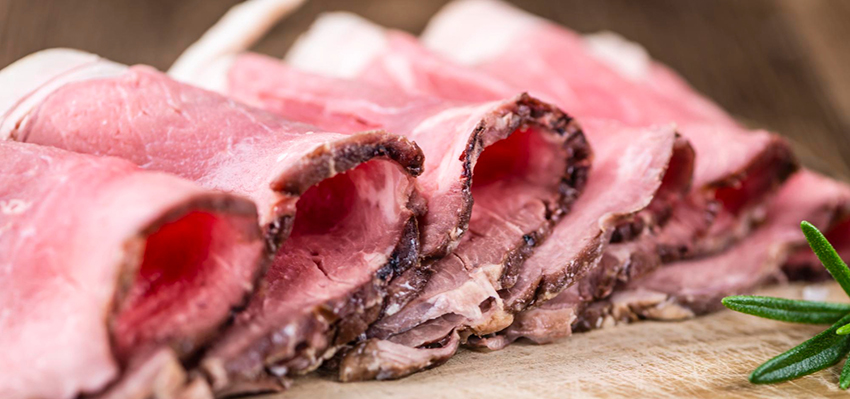This is the conclusion reached by EFSA in its of the risk to public health associated with the presence of nitrosamines in food. Ten nitrosamines found in food are carcinogenic and genotoxic.
Nitrosamines have been detected in various types of food such as cured meat products, processed fish, cocoa, beer and other alcoholic beverages. The main food group contributing to exposure to nitrosamines is meat and meat products.
However, they can also be found in other foods such as processed vegetables, cereals, milk and dairy products or fermented, pickled and seasoned foods.
Nitrosamines are formed under certain conditions, especially when heated, from nitrite or nitrate and so-called amines, which are formed from amino acids and occur naturally in protein-containing foods. Meat and sausage products such as meat loaf, bacon, salami and Vienna sausages usually contain the preservative nitrite pickling salt (sodium nitrite, E 250) for preservation. This reacts with the naturally occurring amines in the meat or sausage to form nitrosamines. If cured meat and sausage products are also strongly heated, the carcinogenic nitrosamines can form even more easily. But even with a purely vegan/vegetarian diet, the intake of nitrosamines cannot be avoided. Leafy vegetables and salads unfortunately often contain higher amounts of nitrate, which can be converted by bacteria to nitrite and, in further metabolism, to nitrosamines.
Beer drinkers also have an increased risk of ingesting nitrosamines; here the compounds are formed during the drying process of the malt (kilning). Smokers, however, have a significantly increased risk. Significantly more nitrosamines are absorbed through tobacco consumption than through food. This also applies to passive smokers.
The risk can only be minimised by a diet that is as balanced and varied as possible and low in meat. Smoked and cured meat products should only be eaten in moderation and preferably not grilled.
As a rule, organic vegetables contain less nitrate than conventionally grown produce fertilised with minerals. Leafy vegetables such as spinach and chard should not be reheated and stems are better removed, as they contain the most nitrate.
YOUR PLUS: The AGROLAB GROUP's food laboratories test foods for their nitrate and nitrite content. The determination of nitrosamines in food is only useful in exceptional cases, as these compounds are mainly formed during preparation or in the digestive tract. On request, however, we also offer this analysis in cooperation with a partner laboratory.
Author: Dr. Frank Mörsberger

 Contact
Contact

 Contact
Contact Career
Career